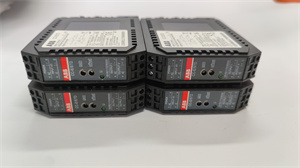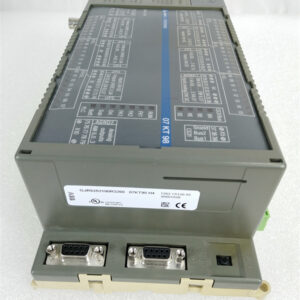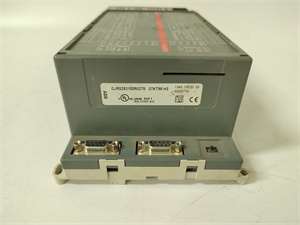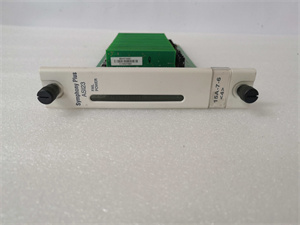Description
Detailed parameter table
| Parameter name | Parameter value |
| Product model | GVC736CE101 |
| Manufacturer | ABB |
| Product category | This product belongs to ABB’s energy storage and power regulation equipment series. It is mainly designed for applications in the power grid, such as energy storage systems in power generation and distribution, and can also be used in industrial power – intensive scenarios for power quality improvement and energy management. |
| Rated power | Usually has a rated power of up to 1000 kW, which enables it to handle large – scale power – related tasks, whether it is charging energy storage devices during low – load periods of the power grid or discharging power to the grid during peak – load periods. |
| Input voltage range | Supports a wide input voltage range, typically 380 – 1200 VAC. This wide voltage adaptability allows it to be easily integrated into different power grid systems, both in industrial parks with relatively high – voltage power supplies and in general commercial areas with lower – voltage grids. |
| Output voltage range | The output voltage can be flexibly adjusted according to different application requirements. For DC – output scenarios related to energy storage, it can output voltages in the range of 0 – 1000 VDC. In some power – conversion applications that require AC output, it can generate sinusoidal AC voltages with amplitudes adjustable within a certain range, such as 0 – 500 VAC. |
| Energy storage capacity (if applicable) | When used in energy storage – related applications, it can be connected to energy storage devices with a large capacity. For example, it can be paired with lithium – ion battery energy storage systems with capacities ranging from 1 MWh to 10 MWh, depending on the specific power grid or industrial energy management needs. |
| Power conversion efficiency | Features high – power conversion efficiency, reaching up to 97%. High efficiency is crucial in energy – related applications as it reduces energy loss during the power conversion process. In a power – generation – side energy storage system, high – efficiency power conversion can ensure that more electrical energy is effectively stored and utilized, reducing waste. |
| Communication interfaces | Equipped with multiple communication interfaces, including Modbus RTU/TCP, Profibus – DP, and Ethernet – IP. These interfaces facilitate seamless communication with other devices in the power grid or industrial network. Modbus RTU/TCP can be used to transmit real – time power data and receive control commands from the power grid control center. Profibus – DP is suitable for connecting to other power – related devices in a local industrial network, and Ethernet – IP enables high – speed data transfer for more complex power system monitoring and control. |
| Operating temperature range | Designed to operate in a temperature range of – 20 °C to +60 °C. This wide temperature range allows it to be used in various harsh environments, such as desert – based solar power plants with high – temperature conditions during the day and cold – storage facilities with low – temperature requirements. With appropriate cooling and heating measures, it can maintain stable performance within this temperature range. |
| Dimensions | The device has dimensions of approximately 800 mm x 600 mm x 400 mm. Its relatively compact size considering its high – power capabilities makes it suitable for installation in power cabinets or equipment enclosures in limited – space power – grid substations or industrial plants. The standard dimensions also facilitate integration into existing power – related systems. |
| Weight | Weighs around 30 kg. Although it is relatively heavy due to its power – handling components, the weight is optimized to ensure the stability of the device during operation and to house the necessary power – conversion and control components. |
| Quality and reliability | Manufactured in strict accordance with international quality standards such as IEC 61850. It has undergone comprehensive reliability testing, including high – voltage withstand testing, temperature cycling testing, and vibration testing. The mean time between failures (MTBF) is estimated to be over 100,000 hours, providing high – reliability operation in power – critical applications. This long MTBF ensures that the device can operate stably for an extended period, reducing the risk of power – system failures and associated economic losses. |
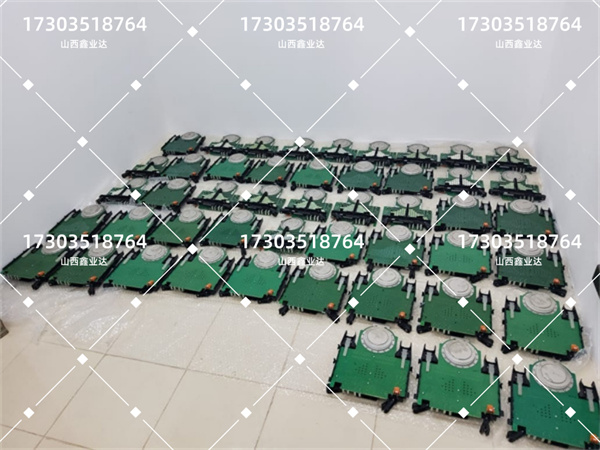
ABB 5SHY4045L0006
Product introduction
The ABB GVC736CE101 is a high – performance energy – related device that plays a crucial role in modern power – grid and industrial energy management. As part of ABB’s advanced product portfolio in the energy field, it is developed to meet the complex requirements of power storage, conversion, and regulation in various power – related scenarios.
Based on ABB’s leading – edge technology and rich manufacturing experience in power electronics and energy management, this device integrates functions such as power conversion, energy storage system interface, and power quality improvement. By connecting to power generation sources, energy storage devices, and power – consuming loads, it can effectively manage the flow and conversion of electrical energy, ensuring the stable and efficient operation of power – related systems. Whether in a large – scale power – generation and distribution network for grid – side energy storage and peak – shaving, or in an industrial plant with high – power consumption for power – factor correction and energy – saving, the GVC736CE101 can provide reliable power – related support, contributing to the overall optimization of the power system.
Core advantages and technical highlights
Wide – range input voltage adaptability: With an input voltage range of 380 – 1200 VAC, the GVC736CE101 can be easily integrated into different power grid systems around the world. In power – grid applications where voltage fluctuations are common, it can adapt to different grid conditions without the need for additional complex voltage – conversion equipment in many cases, reducing system complexity and costs. This adaptability also enhances the device’s compatibility and stability when connected to different power supplies.
Flexible output voltage adjustment: The ability to adjust the output voltage within a wide range, such as 0 – 1000 VDC or 0 – 500 VAC, makes it highly versatile. In an energy storage system for a wind power plant, it can adjust the output voltage to match the charging and discharging requirements of energy storage batteries. In an industrial power – quality improvement application, it can provide the appropriate voltage to correct power – factor and improve the quality of power supply, meeting the diverse power – conversion needs of different applications.
High power rating and efficiency: With a power rating of up to 1000 kW and a conversion efficiency of up to 97%, it can handle large – scale power – related tasks while minimizing energy loss. In a large – scale data center’s power supply system, the high – power capacity can meet the substantial power demand, and the high efficiency can reduce energy consumption and operating costs. This high – power and high – efficiency combination is crucial for power – intensive applications.
Rich communication interfaces: The presence of Modbus RTU/TCP, Profibus – DP, and Ethernet – IP communication interfaces enables seamless integration into different industrial and power – grid networks. In a smart grid monitoring system, the Modbus RTU/TCP interface can be used to transmit real – time power data and receive control commands from the monitoring center. The Profibus – DP interface can communicate with other power – related devices in a local area network, and the Ethernet – IP interface can be used for high – speed data transfer and integration with upper – level control systems, enhancing the product’s connectivity and interoperability.
Wide operating temperature range: Operating within – 20 °C to +60 °C, the GVC736CE101 can be used in various harsh industrial environments. In a polar – region – based power – grid substation, where the temperature can be extremely low, this product can still maintain stable operation through proper heating and insulation measures. In a tropical – region – based industrial plant with high – temperature and high – humidity conditions, it can also work properly with appropriate cooling and dehumidification, ensuring the normal operation of the power – related system regardless of the ambient temperature.
Compact size and reasonable weight: With dimensions of 800 mm x 600 mm x 400 mm and a weight of around 30 kg, it is relatively compact considering its high – power capabilities. This compact size is conducive to installation in limited – space power cabinets or equipment enclosures in power – grid substations or industrial plants, saving valuable space in power – control systems. The reasonable weight also makes it convenient for handling and installation, reducing the labor intensity of installation workers.
High reliability: Meeting international quality standards like IEC 61850 and having an MTBF of over 100,000 hours, it offers high – reliability operation. In a continuous – production industrial process, such as a chemical plant where power – system stability is crucial, the high – reliability of the GVC736CE101 ensures that the power – related system can operate stably for a long time. Minimizing the risk of device failures helps to maintain continuous production, reducing maintenance costs and production losses caused by power – system downtime.
Typical application scenarios
Power – grid energy storage systems: In a large – scale power – grid, the GVC736CE101 can be used in energy storage systems. During off – peak periods, it can convert the excess electrical energy in the grid into a form suitable for storage in energy storage devices (such as batteries). During peak – load periods, it can reverse the process, converting the stored energy back into electrical energy and injecting it into the grid to relieve power shortages. Its high – power rating and efficiency ensure efficient energy storage and release, helping to balance the power supply and demand in the grid and improve the overall stability of the power grid.
Renewable energy power generation and integration: In a solar or wind power generation system, the GVC736CE101 can play a key role. For solar power plants, it can convert the DC power generated by solar panels into AC power suitable for grid connection. At the same time, it can also adjust the power output according to the grid’s demand, compensating for the instability of solar power generation due to weather changes. In wind power generation systems, it can handle the power conversion and control of variable – speed generators, ensuring stable power output and high – quality grid – connection, improving the utilization rate of renewable energy.
Industrial power – intensive applications: In industrial plants with high – power consumption, such as steel mills and aluminum smelters, the GVC736CE101 can be used for power – factor correction and power – quality improvement. By adjusting the output voltage and current, it can improve the power factor of the industrial power system, reduce reactive power loss, and improve the efficiency of power utilization. It can also filter out harmonics in the power system, protecting sensitive industrial equipment from the impact of power – quality problems and ensuring the stable operation of the industrial production line.
Related model recommendations
GVC736CE050: This is another energy – related device from ABB with a lower power rating, usually up to 500 kW. In applications where the power demand is not as high, such as in some small – to – medium – sized industrial power – quality improvement projects or local power – grid energy – storage systems in residential areas, the GVC736CE050 can be a more cost – effective choice. It still has similar input voltage adaptability, output voltage adjustment capabilities, and communication interfaces as the GVC736CE101, but with reduced power – handling capabilities to meet the needs of less – demanding applications.
GVC736CE200: This model has a higher power rating, capable of handling up to 2000 kW. In extremely high – power applications, such as in large – scale industrial complexes with multiple high – power motors or large – capacity energy storage systems for regional power – grid energy management, the GVC736CE200 can better meet the requirements. It also offers enhanced cooling and heat – dissipation mechanisms to handle the higher power – related heat generation, ensuring stable operation under high – power conditions.
ACS880 – 04: ABB’s variable – speed drive, which can be used in combination with the GVC736CE101. In an industrial motor – drive system where power – quality improvement and motor speed control are required, the ACS880 – 04 can perform motor speed control, while the GVC736CE101 can be responsible for power conversion and power – quality correction. The two devices can communicate with each other through the Profibus – DP interface, working together to achieve efficient and stable operation of the industrial motor – drive system.
PFE125: ABB’s power factor correction module. In a power – distribution system where improving power factor is crucial, such as in a large – scale shopping mall’s power supply system, the PFE125 can be connected to the GVC736CE101. It can further improve the power factor of the power grid, reducing reactive power and improving the overall power – utilization efficiency of the system.
DSQC678A: ABB’s communication module. In a complex industrial network where seamless communication between multiple devices is required, the DSQC678A can be used in conjunction with the GVC736CE101. It can expand the communication capabilities of the GVC736CE101, enabling it to communicate with more types of devices in the network and enhancing the overall connectivity and interoperability of the industrial system.
Installation, commissioning and maintenance instructions
Installation preparation: Before installing the GVC736CE101, carefully read the installation manual provided by ABB. Ensure that the installation environment is clean, dry, and well – ventilated to dissipate heat generated during operation. Check the input power supply voltage and frequency to match the device’s requirements. Mount the device on a suitable support structure, ensuring a firm and stable connection. Connect the power cables, communication cables, and control cables following the wiring diagram in the manual, making sure that the cable connections are secure and properly insulated. Avoid installing the device near strong electromagnetic interference sources, such as large – power transformers or radio – frequency transmitters.
Commissioning process: After installation, power on the device gradually. Use ABB’s dedicated configuration software to set up the device’s parameters, such as input/output voltage settings, communication protocol settings, and power – conversion control algorithms. Check the communication status with other devices in the network, ensuring that data can be transmitted and received correctly. Monitor the input and output power parameters using testing equipment to verify that the device is working as expected. Conduct a series of functional tests, such as power – on self – test, load – testing, and voltage – regulation testing, to ensure that the power – related system functions properly. Calibrate the power – measurement and control parameters if necessary to ensure accurate power conversion and control.
Maintenance suggestions: Regularly inspect the device for any signs of physical damage, such as cracks in the casing or loose cable connections. Clean the device periodically to remove dust and dirt, especially in dusty industrial environments. Monitor the device’s operating temperature using built – in temperature sensors or external monitoring equipment to ensure that it remains within the normal range. Check the communication status with other devices in the network at regular intervals to detect any potential communication failures. If any abnormal conditions are detected, such as incorrect output power or communication errors, refer to the troubleshooting guide in the user manual. Update the device’s firmware regularly to obtain the latest features, performance improvements, and security patches. Replace any worn – out components, such as power – semiconductor devices or cooling – system fans, with genuine ABB spare parts to maintain the device’s performance and reliability.
Service and guarantee commitment
ABB provides a 3 – year warranty for the GVC736CE101, covering defects in materials and workmanship. During this period, if the device fails due to manufacturing – related issues, ABB will provide a free replacement or repair. Customers can access ABB’s global technical support network, which is available 24/7 for troubleshooting and technical advice. ABB offers a comprehensive library of technical documentation, including user manuals, programming guides, and application examples, to assist customers in using and maintaining the GVC736CE101. In addition, optional on – site installation, commissioning, and maintenance services are available for customers who require hands – on support. ABB ensures the availability of spare parts for a reasonable period after the product’s production phase, minimizing the risk of system downtime due to unavailability of replacement parts. This commitment reflects ABB’s confidence in the GVC736CE101’s reliability and its dedication to maximizing customer uptime in power – related and industrial applications.
Full 12-month warranty on all components
Dedicated after-sales support
Same-day dispatch on 1000s of parts
All units are fully tested
- 1. Email confirmation
You will get an email confirming that we have received your enquiry. - 2. Dedicated Account Manager
One of our team will be in touch to confirm your part(s) specification and condition. - 3. Your quote
You will receive a comprehensive quote tailored to your specific needs.
 Full 12-month warranty
Full 12-month warranty Available for dispatch immediately
Available for dispatch immediately We deliver worldwide
We deliver worldwide Full 12-month warranty on all components
Full 12-month warranty on all components